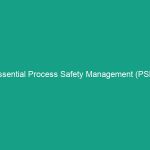Good Morning Team!
Today, we’re diving into an essential topic that impacts our daily operations during the winter season: Essential Snow Thrower Safety Guidelines: Avoid Common Risks Today!. As we tackle snow removal tasks, it’s crucial to prioritize Safety to prevent accidents and injuries. This talk will help you understand the risks associated with snow throwers and how to mitigate them effectively.
Understanding Essential Snow Thrower Safety Guidelines
Snow throwers, commonly known as snow blowers, are powerful machines designed to clear snow from driveways, sidewalks, and parking lots. While they are incredibly effective, they also pose several Hazards if not handled properly. Understanding these safety guidelines is vital not only for your well-being but also for maintaining a safe work Environment for all.
Many workers think that as long as they are cautious, they can operate a snow thrower without any risks. However, common misconceptions can lead to serious accidents. For instance, assuming that the machine’s safety features are foolproof can be dangerous. It’s critical to recognize that safety protocols are in place for a reason.
Key Hazards, Risks, and Safety Considerations
As we prepare to use snow throwers, let’s discuss the specific hazards and risks involved:
- Mechanical Injuries: Snow throwers have moving parts that can cause severe injuries, including lacerations and amputations.
- Slip and Fall Hazards: Icy surfaces can lead to slips and falls while operating or maneuvering around the equipment.
- Carbon Monoxide Poisoning: Using snow throwers in enclosed spaces can lead to carbon monoxide buildup, a colorless, odorless gas that can be deadly.
- Flying Debris: Snow throwers can launch rocks, ice, and other debris at high speeds, posing a risk to nearby individuals and equipment.
Ignoring these safety concerns can result in serious injuries or even fatalities. It’s crucial to recognize the importance of adhering to safety protocols to protect yourself and your colleagues.
Best Practices, Procedures, & Actionable Advice
Now that we’ve identified the risks, let’s talk about how to stay safe while using snow throwers. Here are some Best Practices and Procedures to follow:
1. Conduct a Pre-Operation Inspection
Before starting any snow thrower, perform a thorough inspection to ensure it is in safe working condition. Check the following:
- Fuel levels and leaks
- Condition of the blades and belts
- Functionality of safety features such as the emergency shut-off
2. Use Personal Protective Equipment (PPE)
Always wear appropriate PPE when operating a snow thrower. This includes:
- Heavy-duty gloves
- Safety Goggles to protect your eyes from flying debris
- Non-slip footwear to prevent slips and falls
- Hearing protection if the machine is particularly loud
3. Follow Safe Operating Procedures
When operating a snow thrower, adhere to the following safe operating procedures:
- Always read and understand the manufacturer’s instructions before use.
- Start the machine outdoors and ensure proper ventilation.
- Never place your hands near the moving parts while the machine is running.
- Shut off the machine and disconnect the spark plug before attempting any Maintenance or clearing blockages.
4. Be Aware of Your Surroundings
As you operate the snow thrower, remain aware of your surroundings. Look out for:
- Other workers in the area
- Obstacles such as rocks, curbs, or uneven terrain
- Weather conditions that may affect visibility or ground stability
5. Know What to Do in an Emergency
In case of an emergency, knowing how to respond can save lives. Ensure you:
- Know the location of first aid kits and emergency contacts.
- Understand how to use emergency shut-off features on your equipment.
- Communicate effectively with your team in case of an incident.
Regulations, Standards, and Compliance
It’s important to be aware of the Regulations and Standards that govern the use of snow throwers. According to OSHA regulations, employers must ensure that all equipment is maintained and operated safely. Compliance with these standards not only protects you but also minimizes legal risks for the company.
Regular Training on equipment use, safety procedures, and emergency protocols is essential for compliance and safety. Remember, safety is everyone’s responsibility, and adherence to these regulations ensures a safer work environment for all.
Employee Engagement & Discussion
Now that we have covered the essential guidelines and Best Practices, I’d like to hear from you. What safety challenges have you encountered related to snow throwers? How can we improve our safety practices during snow removal operations? Let’s open the floor for discussion.
Conclusion & Key Takeaways
In summary, understanding and implementing Essential Snow Thrower Safety Guidelines is critical for ensuring a safe workplace during the winter months. Remember to:
- Conduct pre-operation inspections.
- Wear appropriate PPE at all times.
- Follow safe operating procedures diligently.
- Stay aware of your surroundings.
- Know emergency procedures.
By prioritizing safety, we can protect ourselves and our colleagues from accidents and injuries. Thank you all for your attention and commitment to maintaining a safe working environment. Let’s continue to work together to prioritize safety and ensure everyone returns home safe after every shift!


